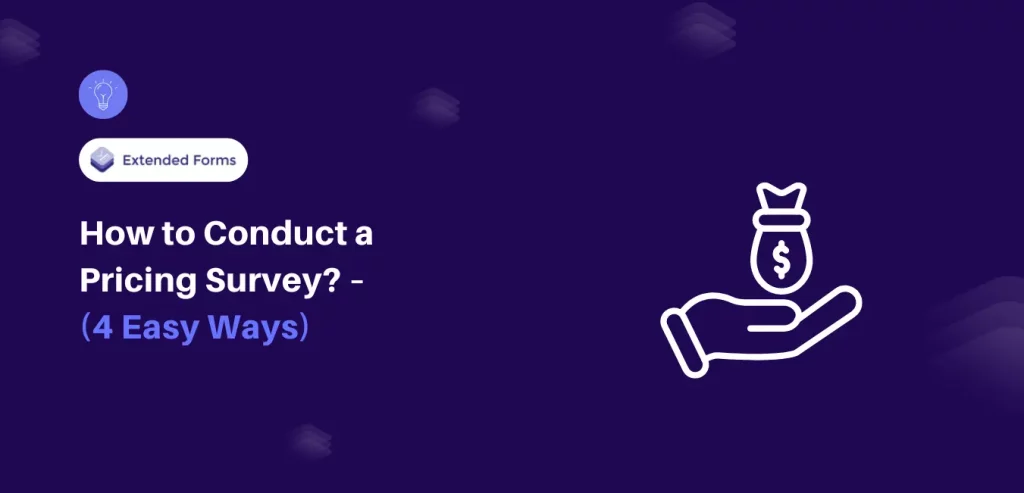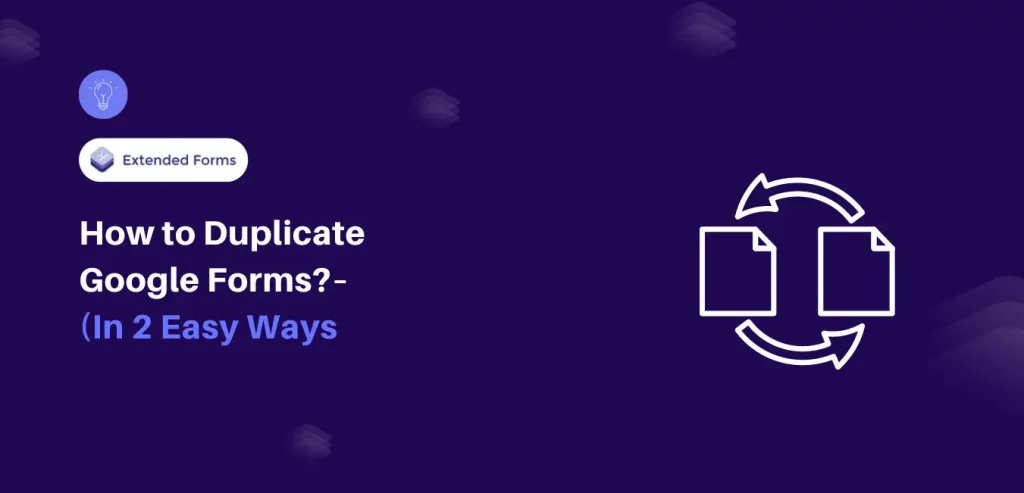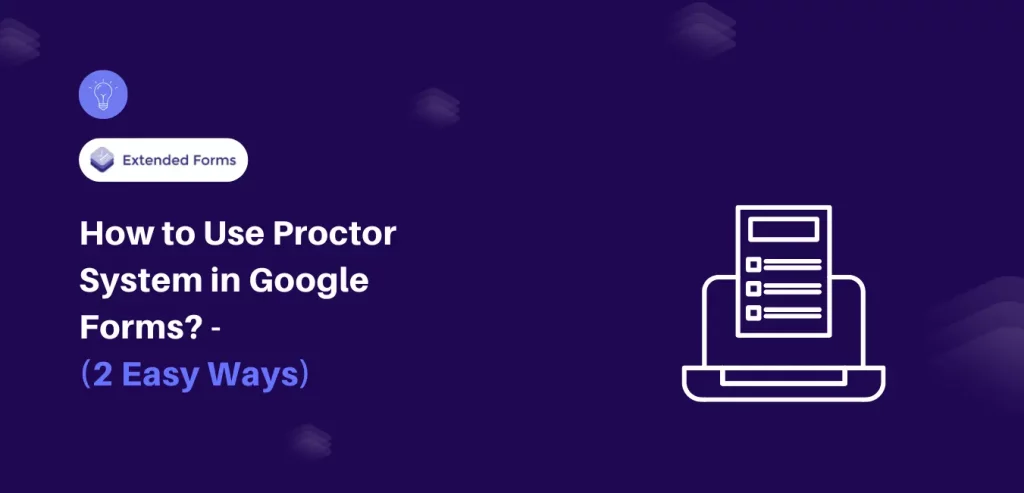Pricing is a critical factor in any business strategy. Determining the optimal price of a product/service is vital and can impact sales, revenue, and overall profitability. Some brands rely on looking at competitors’ pricing strategies, it may be easy but it could be costing you a lot more than what is required. However, conducting a pricing survey can help businesses make informed pricing decisions.
Market pricing research can provide valuable insights into customers’ willingness to pay, perceptions, and preferences. However, conducting a pricing survey required rigorous planning, thoughtful question design, effective administration & analysis.
In this blog, we’ll cover everything you need to know about pricing surveys, including what they are and how to conduct them effectively.
Table of Contents
What Is a Pricing Survey?
A pricing survey is a research method used to help businesses determine and analyze the optimal pricing for a product or service. Pricing survey questions directly focus on your target market to gain insights into how much they are willing to pay for a product/service, and what features they find more valuable and can have the highest impact on sales.
Additionally, it helps to know whether different market segments are willing to pay different prices, the perceived value of your brand/service, etc. All these are taken into consideration when conducting a market pricing survey.

The efficacy of a pricing survey is that it provides an empirical way to determine people’s willingness to pay a certain amount of price. Rather than relying on non-empirical ways like a rule of thumb or copying competitors’ market prices.
The data obtained from pricing research is utilized to establish prices for goods and services, which in turn enhances the precision of revenue and profit projections. There are several ways to conduct pricing surveys, but the ultimate goal of each is common – to ascertain the actual worth of a product or service from the perspective of potential customers.
Why Conduct a Market Price Survey?
Pricing represents the most effective profit-driving factor for a company. Overvaluing a product or service can decrease demand, whereas undervaluing it means missing out on potential revenue. Therefore, finding a balance in pricing is difficult, but with the correct research method, an organization can set the right price for the market.
Here, are some reasons why conducting a market price survey is important –
- Accurate pricing is a major force as to whether customers will make a purchase. In other words, your products’ prices can be the difference between the failure or success of your product.
- Appropriately conducted pricing surveys can not only reveal the price range but also the decisions behind customers’ purchases.
- Price and perception of quality are interconnected. As the right pricing can communicate the brand’s value and product.
- Pricing surveys are useful to understand which product features your customer views as most valuable. Besides, how different customers and market segments view your product differently.
What Are Various Types of Pricing Surveys?
A pricing survey consists of several types that can be used to provide valuable pricing strategies. These are – Willingness to pay, Westendorp Price Sensitivity Meter, Conjoint analysis, and Gabor-Granger method.
Obtaining accurate and effective pricing information may require multiple survey types, as the pricing process is multifaceted and intricate in itself. This may help obtain the necessary information for precise pricing decisions.
Let’s discuss a bit in detail all these different pricing survey types –
- Willingness to pay – The WTP (willingness to pay) surveys refer to the highest price point customers are willing to pay for your product or service. The market trends, economy, product value, location, and product quality, all influence willingness to pay.
The willingness to pay survey research strategy asks respondents with either open-ended questions or multiple close-ended questions with a series of price points. For example, open-ended questions: How much would you be willing to pay for this product? For close-ended questions: What would you be willing to pay for this product?
- $30 – $40
- $50 – $60
- $70 – $80
This survey method is easy and simple but the following methods will provide more insights for informed decision-making.
- Van Westendorp Price Sensitivity Meter – The Van Westendorp Price Sensitivity meter is a research method developed by Dutch economist Peter Van Westendorp.
It is a pricing survey method often used by companies who aren’t sure of the price range of a product. To identify consumers’ perception of its value and what they perceive to be an acceptable price range. The survey method uses four questions that indirectly allow to capture customers’ price sensitivity, purchasing power, purchase decision perspective, and how much they are willing to pay. The four pricing survey questions are –
- At what price do you think this product is too inexpensive that you’d question its quality and not consider buying? (too cheap)
- At what price do you think the product is good value for money? (cheap, good value)
- At what price do you think the product is getting expensive but still might consider purchasing? (Expensive/high side)
- At what price would you begin to think the product is too expensive? (Too expensive)
Once the data is collected through this survey method, you’ll need to plot it on the graph. With the x-axis scale as the price, and the y-axis scale percentage of respondents who chose the price. The intersection of the graphed data will provide you with the information you need for pricing.
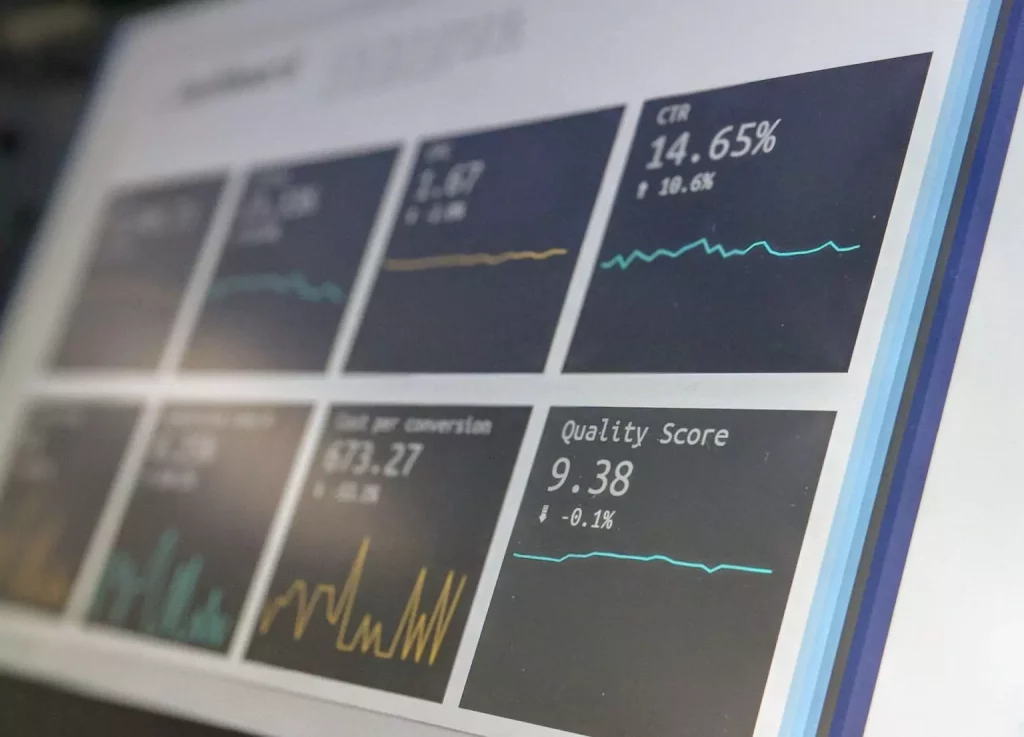
The point at which the answers to the first and second questions meet is referred to as the point of marginal cheapness (PMC), while the point where the responses to the second and fourth questions intersect is known as the point of marginal expensiveness (PME). The PMC & PME are the lowest and highest price points that customers are willing to pay and it is called the “range of acceptable pricing.”
3. Conjoint Analysis – This form of statistical analysis is used in market research and it is highly effective and provides a realistic decision-making environment for companies. It is used to understand how customers perceive or assign different attributes/features of a product or service, including the price.
Similar to the real-life shopping experience of comparing products and purchasing decisions. The conjoint analysis uses discrete choice modeling to find out what features/prices have the most influence on purchasing decisions.
There are various ways to conduct conjoint analysis, one of them is where the survey presents participants with combinations of products’ features/attributes (one of them being price) & asking them to choose between competing sets.
4. Gabor-Granger method – The fourth pricing method that utilizes surveys is the Gabor-Granger method. Similar to the Van Westendorp pricing method, this strategy helps to pinpoint the best possible price for your product by determining its price elasticity.
It determines the pricing points so you can plot the demand and revenue curves to figure out the best price for maximum revenue. This type of pricing survey strategy asks questions of the Likert scale type. You first present description of the product/service & ask about their willingness to purchase the product.
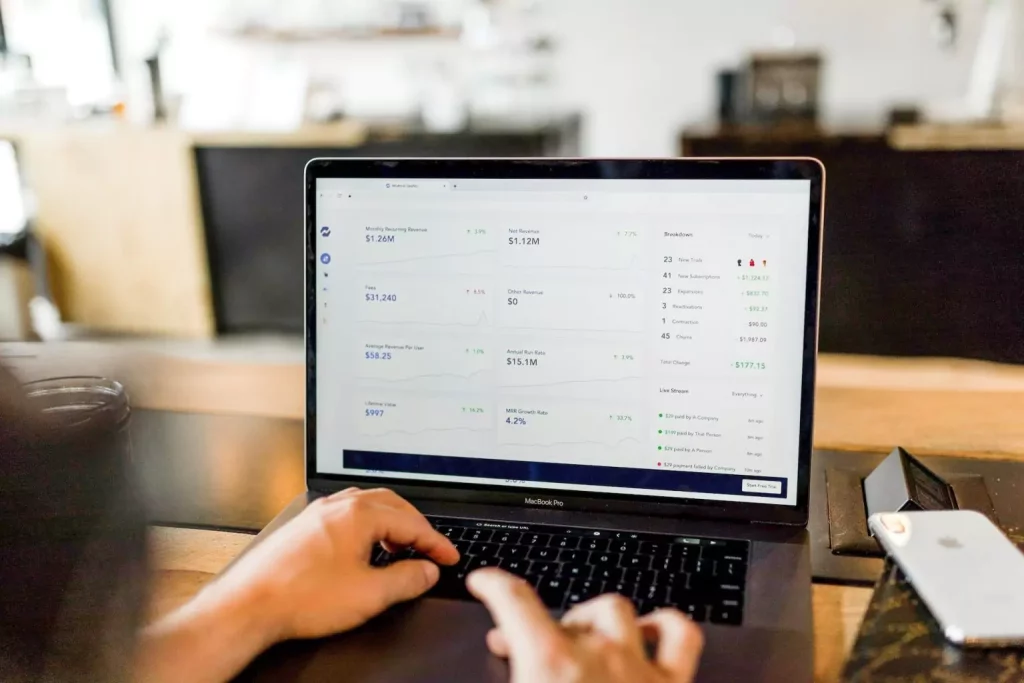
Based on that answer, you can then ask about their willingness to pay for a product by increasing or decreasing the price. For example, After reading all of the provided information about our product, how likely are you to purchase it at $110?
- Extremely likely
- Very likely
- Somewhat likely
- Not so likely
- Not at all likely
If respondents respond from the below three options, then add skip logic and present them with a similar question but a lower price point. Repeat this process until the saturation/elasticity point, which indicates the respondents’ willingness to pay.
In a similar way, do it if the respondents answer from the first two responses. You can also ask questions like – Based on the information we provided about product X, would you purchase this product for $110?
- Yes
- No
If the response is yes, skip logic to ask if they would purchase for a higher price. Repeat it until you get no response for a certain price and you will know the maximum price they are willing to pay.
How to Conduct a Pricing Survey?
Here are some common steps to follow when planning to conduct a google pricing survey. Irrespective of the platform you choose to conduct your survey the procedure remains the same.
1. Planning Your Pricing Survey
- Apart from defining the survey purpose and goals, you must also identify the target audience. Basically, the survey should target future customers and not just focus on people already following your brand.
- Further, planning also includes the sample size and format of your pricing questions survey (either you want it to be multiple choice or open-ended questions, or include both).
2. Crafting Effective Survey Questions
- First and foremost, go to Google Forms select a blank form, and then create the pricing survey questions. Select amongst different types of pricing survey questions – open-ended, multiple choice, rating scale, etc.
- Here are some pricing survey example questions that can be included –
- How familiar are you with (the product)?
- How frequently do you buy (the product)?
- If you knew the price of [the product] was X, would you be willing to buy it?
- What features do you expect to come standard for [the product]?
- When crafting the survey questions try to avoid writing leading questions, keep the length of the survey short, and keep the questions concise and clear.
- After that, you can configure the settings of google forms as per your necessity.
Looking for an easy way to allow multiple domains for form sharing? Read, How to Allow Multiple Domains for Form Sharing With an Organization.
3. Administering the Survey
- The next step is to prepare for the survey administration i.e., test the survey, share it with the audience, and collect data from the survey.
- It is necessary to test your survey, to make sure that your questions aren’t guiding respondents to specific answers that will skew your data.
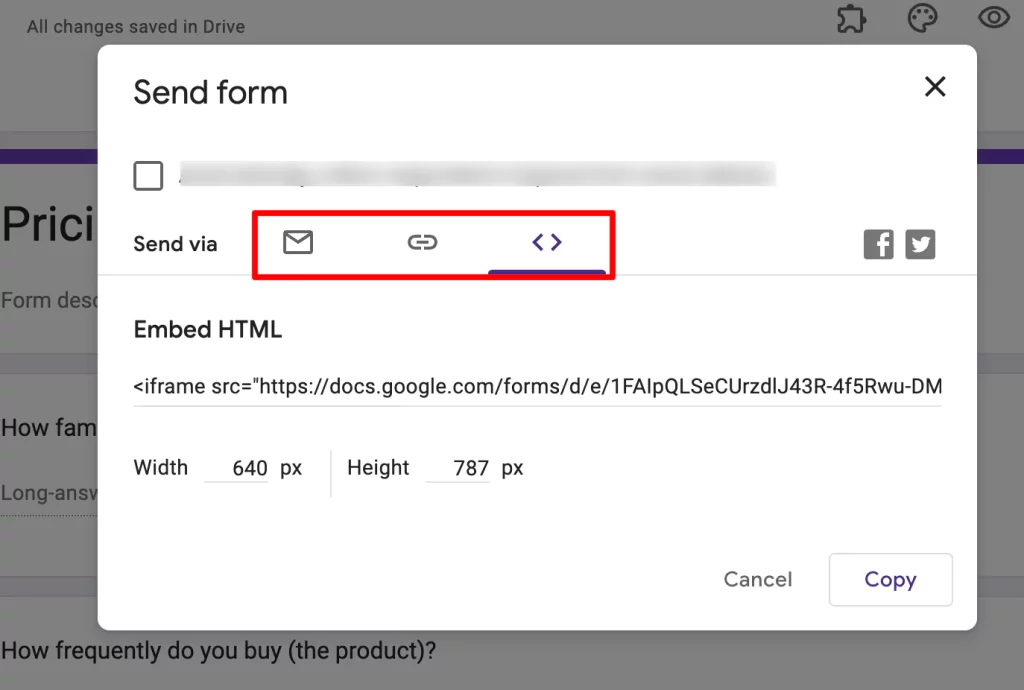
- After you’ve tested your survey, you can disseminate the survey to your target market segment through the link or embed the form on your website.
4. Analyzing and Interpreting Survey Results
- Collect and store your data in Google Sheets. You can simply connect google forms with sheets and all the responses will automatically save in the sheet.
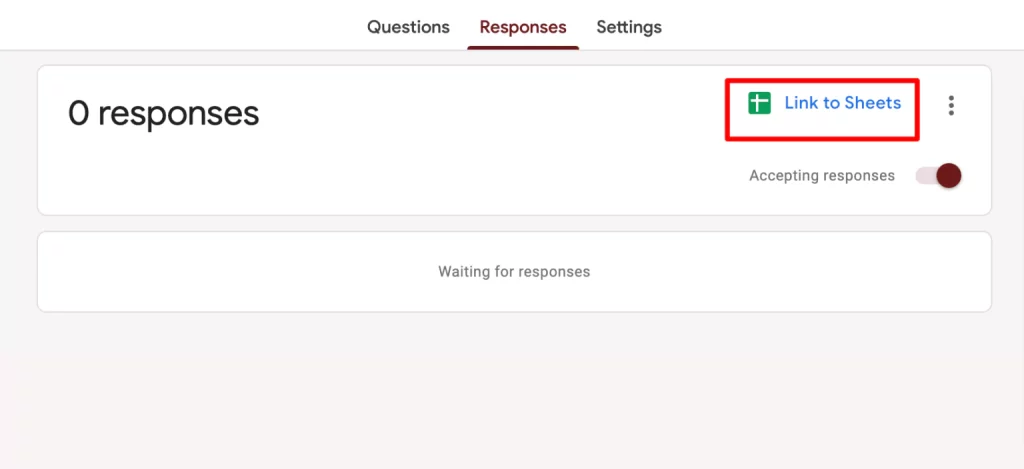
- Conduct the statistical analysis based on the type of pricing survey conducted. For example, creating graphs price sensitivity meter graphs, correlation analysis, etc.
- Interpret the survey results and make data-driven decisions.
Wrapping Things Up
The goal of this article is to guide you in determining the optimal pricing for your products or services to boost your company’s revenue and profits. Use the outlined procedures and survey options to find the price that best suits your target market.
You can simplify your pricing procedure with the help of Google Forms, which is one of the free tools for surveys. To advance your surveys you can add various add-ons (Google Workspace Marketplace apps), one such is ExtendedForms.
It is a countdown timer and online proctor add-on that may not come in handy in this case but it does have various other features like a custom welcome message to be accessible in different languages, custom invitation message, team branding, and individual forms custom support email (for respondents to contact).
If anyone is an educator or administration and looking for a way to add timer, proctor, or advanced Google forms with other features for remote learning then ExtendedForms is the one. Check out the website and try its free version for timer and proctor feature.
If you like reading this blog, also read our detailed guide on How to Connect Google Forms to Discord. [3 Ways] and How to Create a Question Bank in Google Forms? [In 2 Ways].
